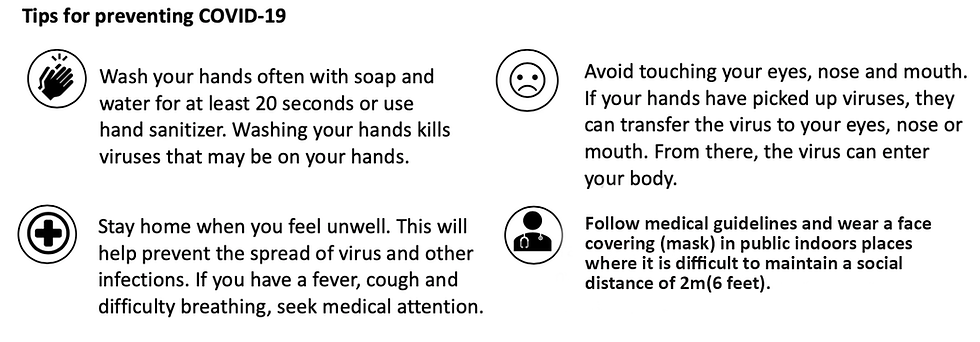
As health officials and governments continue to combat COVID-19 (novel coronavirus), let us take a quick look at the new virus and how to prevent it from spreading.
COVID-19 is an infectious respiratory illness that has flu-like symptoms. It has been compared to SARS (Severe Acute Respiratory Syndrome) because they are both respiratory illnesses that come from different strains of the coronavirus.
With all of the attention surrounding this new virus, we believe that it is important to provide our members with the most up-to-date information about preventing the spread of this virus.

By the Numbers (as of March 3/2020)
While COVID-19 has infected more people than SARS, 88 per cent of COVID-19 infections (80,303 people) are in mainland China. The second most infected country is South Korea with 4,812 infected people.
Who’s at Risk?
While we are all at risk, older adults and people with pre-existing health conditions are at an increased risk of becoming severely ill. People with pre-existing illnesses account for 75 per cent of COVID-19 deaths.
Since COVID-19 is more dangerous for people with pre-existing conditions (cardiovascular disease, diabetes, chronic respiratory disease, hypertension, and cancer) extra precautions should be taken.
For Local 793 members with pre-existing conditions, it is recommended to:
1. Ensure you have sufficient medications in case of quarantine;
2. Visit your doctor at the first sign of any symptoms; and
3. Stock up on food for emergency preparedness.

Tips for preventing COVID-19
In the unlikely event that Local 793 members are quarantined, they will be considered for Short Term Disability (STD) from the start of the quarantine period, provided you have been directed by a medical doctor or public health official. The usual adjudication process will be used.
It is important to remember that while COVID-19 is an infectious disease, 96 per cent of people have recovered once infected.
Use the tips provided to prevent the spread of the virus and stay healthy.
All numbers in this report are from the World Health Organization (WHO) as of March 2/2020
References:
“Advice for Public.” World Health Organization, World Health Organization, www.who.int/emergencies/diseases/novel-coronavirus-2019/advice-for-public.
“Age, Sex, Existing Conditions of COVID-19 Cases and Deaths.” Worldometer, Worldometer, 29 Feb. 2020, https://www.worldometers.info/coronavirus/coronavirus-age-sex-demographics/
“Coronavirus Frequently Asked Questions.” MEDCAN, MEDCAN, 4 Feb. 2020, http://www.medcan.com/medcan-insights/news/coronavirus-faqs/
“Government of Canada.” Coronavirus Disease (COVID-19) Frequently Asked Questions (FAQ), Government of Canada, 29 Feb. 2020, www.canada.ca/en/public-health/services/diseases/2019-novel-coronavirus-infection/frequently-asked-questions.html.
“Summary of Probable SARS Cases with Onset of Illness from 1 November 2002 to 31 July 2003.” World Health Organization, World Health Organization, 24 July 2015, www.who.int/csr/sars/country/table2004_04_21/en/.

Comments